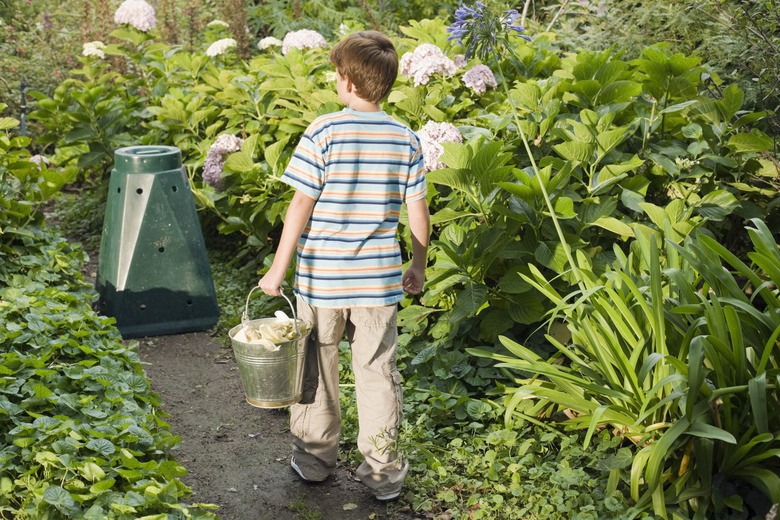Can I Add Earth Worms To My Compost Pile?
Earthworms make an excellent addition to any backyard compost pile. In fact, compost piles provide the perfect food source for earthworms so it's yet another reason to start composting waste. This method is not the same as composting worms, which are kept in containers. Earthworms are burrowers and cannot live inside a bin, though you can use red worms, or composting worms, in a compost pile outdoors.
Earthworms make an excellent addition to any backyard compost pile. In fact, compost piles provide the perfect food source for earthworms so it's yet another reason to start composting waste. This method is not the same as composting worms, which are kept in containers. Earthworms are burrowers and cannot live inside a bin, though you can use red worms, or composting worms, in a compost pile outdoors.
Earthworm Benefits
These creatures provide many benefits. They till the soil and their castings make one of the best and richest fertilizers. You can gather earthworms from your yard to add to your compost.
- Earthworms make an excellent addition to any backyard compost pile.
- Earthworms are burrowers and cannot live inside a bin, though you can use red worms, or composting worms, in a compost pile outdoors.
Make sure you have moist soil in your compost pile. Earthworms require this to survive. If you live in an area that experiences a dry season, you'll need to be sure you dose your pile with water. Earthworms will need a well-mulched area with lots of decaying matter.
Be careful when you turn your compost pile. There could be a dozen or more worms inside the pile's interior. Try to put your worms in an area where they will have a chance to burrow deep into the soil.
- Make sure you have moist soil in your compost pile.
- Earthworms will need a well-mulched area with lots of decaying matter.
Compost bins
If your compost pile is actually a bin, add compost worms. They will eat up your food waste and make great compost. This method can be used indoors and outdoors. Add a lid to your outdoor bin. To do this, you need a wooden or plastic container filled with moistened bedding and red worms instead of earthworms. Your container size will depend on how much food waste you have. The bin will need to drain well and provide darkness and ventilation for the worms.
- If your compost pile is actually a bin, add compost worms.
- To do this, you need a wooden or plastic container filled with moistened bedding and red worms instead of earthworms.
For bedding, choose from shredded newspaper, cardboard, dead plants, shredded leaves, chopped straw, seaweed, sawdust, aged manure and compost. Vary the bedding as much as you can. Add a few handfuls of soil or sand. Moisten materials before adding them to the bin.
Add 2 lbs. of worms for every pound of food waste. If you don't have that many worms, lower the amount of food waste until your worm population rises. Feed the worms any type of food scraps except meats, dairy products, oily foods or grains. Do not add any glass or foil.
- For bedding, choose from shredded newspaper, cardboard, dead plants, shredded leaves, chopped straw, seaweed, sawdust, aged manure and compost.
- of worms for every pound of food waste.
Every two to three months, little bedding should be visible and the bin's contents should look brown and earthy. This means your compost is done. Separate the worms from the compost by moving the finished product to one side. Put new bedding in the other side. Put waste in the new bedding.
Tips
Don't use a rototiller if you have earthworms. This will deplete the worm's food supply.
- Every two to three months, little bedding should be visible and the bin's contents should look brown and earthy.
- Separate the worms from the compost by moving the finished product to one side.
Composting worms and bins are best suited for urban areas or apartments. Earthworms are better choice for those in less dense areas that have a lot of yard waste.
